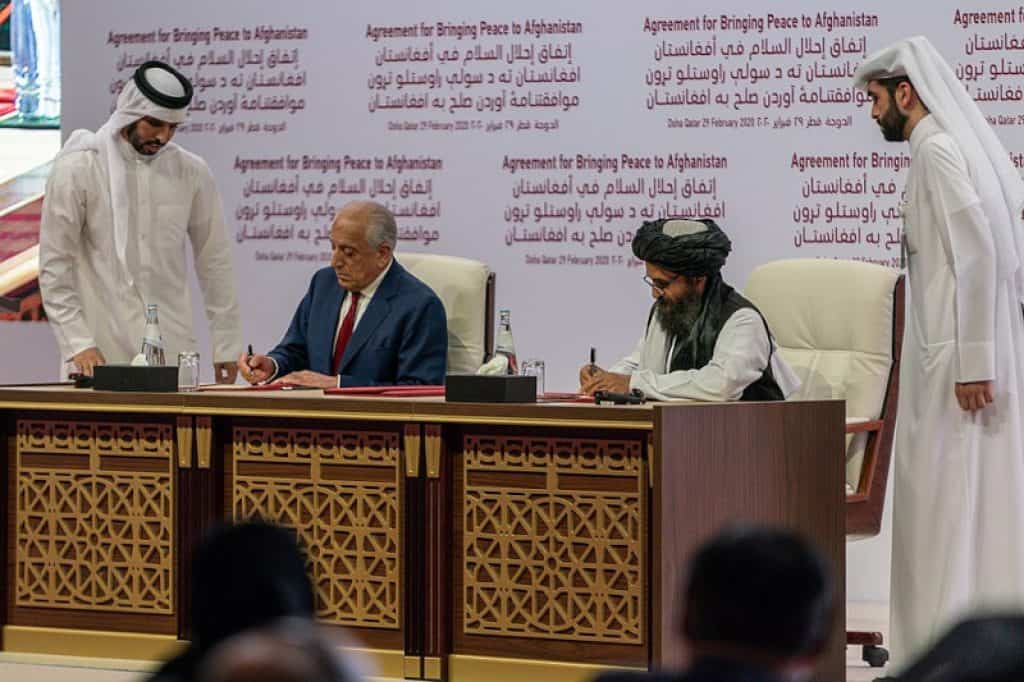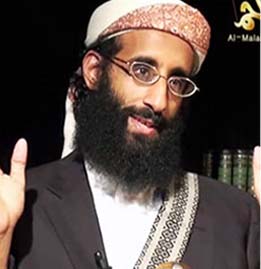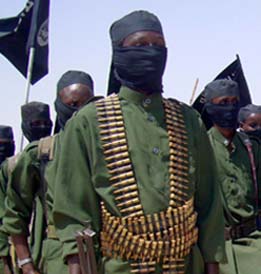
The Trump administration appears to be continuing its previous policy of engagement with the Taliban, which led to the 2020 Doha Agreement that paved the way for the Biden administration’s 2021 withdrawal from Afghanistan. Last week, the US State Department erased Sirajuddin Haqqani’s $10 million bounty, while former American Ambassador to Afghanistan Zalmay Khalizad, the architect of the Doha Agreement, returned to the Afghan stage.
In late March, Khalilzad and hostage envoy Adam Boehler flew to Kabul on behalf of the Trump administration. During his brief visit, Khalilzad secured the release of George Glezmann, an American tourist who was detained by the Taliban in 2022.
Three days after Glezmann’s release, the US State Department’s Rewards for Justice program lifted the bounty on Sirajuddin Haqqani, a Specially Designated Global Terrorist who also serves as the Taliban’s minister of the interior and a deputy emir. State also lifted the bounties for Sirajuddin’s brother, Abdul Aziz Haqqani, and his brother-in-law, Yahya Haqqani. A State Department spokesman confirmed the bounties’ removals to BBC while stating that the trio are still “Specially Designated Global Terrorists and the Haqqani Network remains designated as a Foreign Terrorist Organization.”
The lifting of the bounties for the three Haqqani leaders was followed by the release of another American hostage that the Taliban held. On March 29, Zalmay Khalilzad announced that the Taliban released Faye Dail Hall, who it had detained since February 2025 on charges of operating a drone without proper authorization.
Removing the Haqqanis’ bounty is a step toward the legitimization of Sirajuddin Haqqani, whose network was described by former Chairman of the Joint Chief of Staff Admiral Mike Mullen as a “veritable arm of Pakistani ISI [Inter-Services Intelligence Directorate],” which supports the Taliban. Sirajuddin Haqqani and his lieutenants who are listed as Specially Designated Global Terrorists have also been directly linked to Al Qaeda. The Haqqani Network, which is an integral part of the Taliban, provides Al Qaeda with a safe haven, military expertise and training, fundraising, and other forms of support.
The Taliban and the Haqqani Network continue to support Al Qaeda. The United Nations Analytical Support and Sanctions Monitoring Team reported in February 2025 that Al Qaeda is operating training camps in 12 of Afghanistan’s 34 provinces, while the Movement of the Taliban in Pakistan and Jamaat Ansarulah are operating in two additional provinces with the jihadist group’s assistance. Additionally, Al Qaeda currently maintains other terror infrastructure in Afghanistan, including safe houses, religious schools, a media operations center, and a weapons storage depot.
Painted in broad strokes as a moderate by American general officers and The New York Times, Sirajuddin Haqqani resurfaced on international radar last summer when he inexplicably appeared in the United Arab Emirates and Saudi Arabia, despite still being listed on the FBI’s Most Wanted list.
Despite rumors of a deep fissure between Taliban leader Haibitullah Akhunzada and Sirajuddin Haqqani that metastasized due to Haqqani’s reported extended stay in the UAE, both men continue to govern the gender apartheid regime that militarily defeated the United States, NATO, and their Afghan partners over three years ago. The Taliban’s post-war regime has held together despite repeated reports of leadership disagreements.
The Trump administration isn’t the first US administration to conduct hostage diplomacy and offer concessions to terrorist organizations. However, lifting the rewards is likely to embolden the Haqqani Network, which has kidnapped multiple US and Western citizens over the past two decades. The Trump administration’s continued dealings with the Taliban signal that the group will not be held accountable for providing a safe haven and other material support to Al Qaeda and allied terror organizations.







